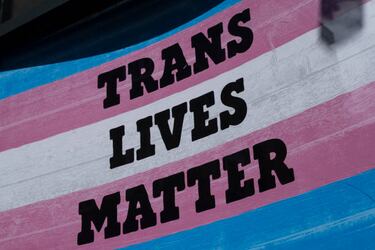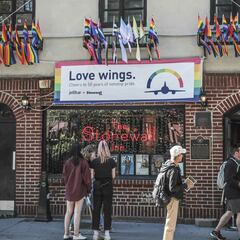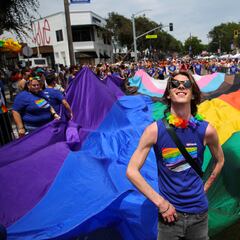Well known for its wide assortment of flags that adorn the Pride celebrations, we bring you the lowdown on some of the most prominent.

Beyond the rainbow: A guide to LGBTQ+ flags and their powerful meanings

It’s June 2025 and once again the streets are filled with rainbows, even without the need for sunlight, raindrops and the incredibly alluring process of refraction, internal reflection, and dispersion. Yes, Pride is known for its colour, and the flags are no exception. There are myriad, but each stand to represent a section of the LGBTQ+ community. As the community grows, so does the array of flags.
Each one reflects the values of the group that flies it. Each colour has a particular meaning, making each one interesting reading for all budding vexillologists worldwide. Let’s learn more...
Pride month: how many flags are there?
It’s pretty much impossible to pin down how many pride flags exist in the world; there are innumerable variations between similar flags of different styles. However, Queer in the World says there are more than 50 flags that are commonly used.
The first pride flag had eight stripes with each colour representing a meaning.
The original meaning of the stripes:
- Pink – sex
- Red – life
- Orange – healing
- Yellow – sunlight
- Green – nature
- Turquoise – magic/art
- Indigo – serenity
- Violet – spirit
Over time, the number of colours has been whittled down to six as pink and turquoise have been removed.

The largest amendment to the traditional flag came in 2018 when Daniel Quasar added further aspects. This included the addition of an arrow from the transsexual flag, white representing intersexuality while the stereotypical colours for boys and girls of blue and pink sit next to each other. Pink has been readded as a stipe of the rainbow and the arrow is completed with the addition of brown and black representing the role non-white people have played in gay liberation.

The transgender flag was designed in 1999 by Monica Helms, an American navy veteran who came out as trans in 1987.

Here’s what she describes as the meaning behind it.
“The stripes at the top and bottom are light blue, the traditional color for baby boys. The stripes next to them are pink, the traditional color for baby girls. The stripe in the middle is white, for those who are intersex, transitioning or consider themselves having a neutral or undefined gender. The pattern is such that no matter which way you fly it, it is always correct, signifying us finding correctness in our lives.”
Related stories
Get your game on! Whether you’re into NFL touchdowns, NBA buzzer-beaters, world-class soccer goals, or MLB home runs, our app has it all.
Dive into live coverage, expert insights, breaking news, exclusive videos, and more – plus, stay updated on the latest in current affairs and entertainment. Download now for all-access coverage, right at your fingertips – anytime, anywhere.


Complete your personal details to comment